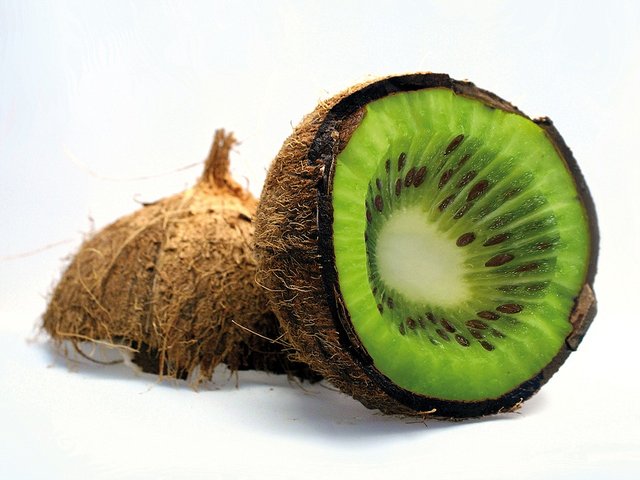
After having given you an overview of the basic building blocks that make life, I think it’s now a good idea to look at DNA a bit more in detail. Some wondered, how mutation or genetic manipulation works. And while there is no “one perfect way” to introduce a mutation (and thus change the genetic code), there are some basic ways in which DNA can be altered – naturally or artificially.
Deletion, Insertion and Substitution
For many reasons (chemical damage, physical damage like radiation, viruses, accidents during DNA repair, …), bases inside our DNA can be lost. The amount can vary from a single one to several, but the effect is that something is missing – and our genome, or at least the genome of a single cell, doesn’t hold the same info as before anymore.
Remember how I said (in the other post, please read it if you don’t have a clue about genetics) that DNA bases are “read” in triplets? Consider this sentence:
YOU CAN RUN OFF ANY DAY
Makes somewhat sense, and each word has three letters. Now, let’s delete the “n” from “CAN”, shall we? But wait, you need to follow the same rule of “Group of Three”!
YOU CAR UNO FFA NYD AY
In a piece of DNA, there would be additional letters after the “AY”, which would still give you a proper triplet. But the sentence? It doesn’t make the slightest sense anymore. Sure, the “You” is still there, and the “Can” is now “Car”, which is still a word but the meaning is totally lost.
That’s what a deletion of one base causes. Deletion can happen in triplets too tho! And
YOU RUN OFF ANY DAY
Still makes sense. Somewhat. In your cells, the deletion might lead to a protein that’s still somewhat functional … or not. Sometimes, the result is toxic. It all depends on the change.
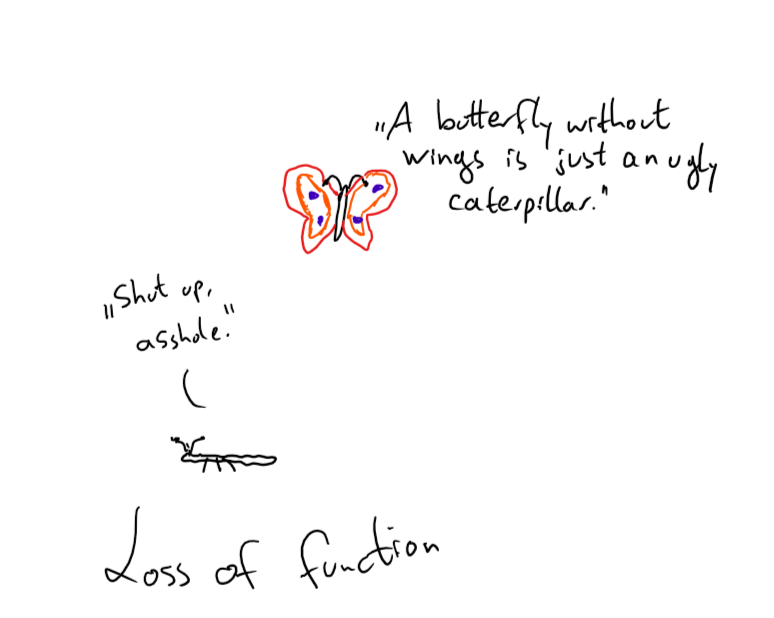
Now, insertion is basically the opposite, but the effect is basically the same. Add an additional “N” to our sentence and we get:
YOU CAN NRU NOF FAN YDA Y
Different change, same issue.
The last mutation is the substitution of bases, for example switching a C for an A. In our example, we’re switching the “N” in “CAN” for an “R”, which changes the sentence to:
YOU CAR RUN OFF ANY DAY
Sounds weird, seems to make sense. Again, how much the resulting protein is affected varies from case to case.
Silent, Nonsense and Missense Mutations
If you remember the “code sun” from the “Building Blocks – Basics” post, you should be aware that some amino acids are coded by more than one base triplet. This is highly beneficial, when a substitution mutation happens. @suesa
For example: UUA codes for Leucine – but so does UUG. If that single base is changed, the mutation will probably not be visible at all. Same goes for insertions and deletions that happen in so-called non-coding regions. A change happens, but the genetic code is not affected by it. This kind of mutation is called Silent mutation.
I can already feel some of you wondering “why does a change in the non-coding regions not mess up everything that comes after? It’s the same piece of DNA after all!” and technically, you’d be correct, if nature wasn’t super smart.
Genes, that serve as a blueprint for proteins, are located in a so-called “Open reading frame” (= ORF). That ORF has a “signal” that tells the enzyme “reading” the DNA to start reading the triplets in this specific region – not before. As long as the mutation happens before and not inside or after that starting signal, the information inside the ORF is safe. And at the end of it, there’s a stop signal.
A mutation inside the start signal leads to the gene not being read, a mutation in the stop signal leads to the enzyme reading more that it is supposed to. And that can lead to other problems.
Nonsense mutations are one of the examples. A substitution of bases, an insertion or a deletion can all be responsible for a “stop signal” in a place where it is not supposed to be: Too early. If the enzyme encounters this stop signal, it doesn’t question it. The enzyme doesn’t know how the protein is supposed to look like! It just follows instructions.
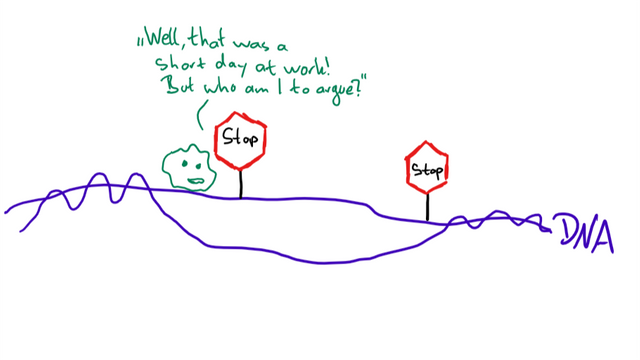
And a premature stop signal leads to an unfinished protein, which likely doesn’t have the functions it’s supposed to have. It’s useless.
In contrary to the nonsense mutation, the protein isn’t shorter, the amino acids are just wrong. Then again, wrong amino acids can still make a protein completely lose its function, and if it’s something important (like, idk, insulin) that sucks hard.
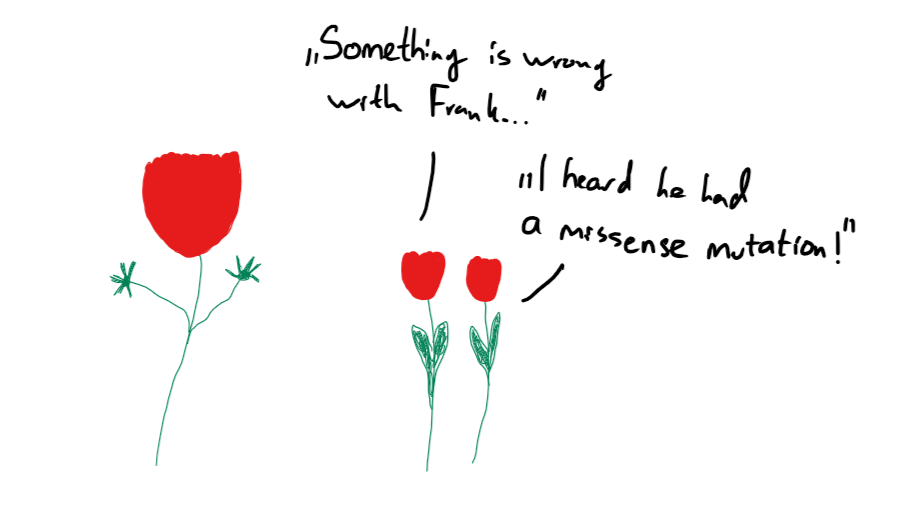
Artificial changes
Genetic engineering follows the same patterns as natural mutations, just more focused on specific results. Bases, triplets or even whole genes are substituted, inserted or deleted to achieve the desired result. For that, mechanisms found in nature are used.
As I already described in my post about GMOs, undirected mutations can be achieved by exposing organisms like plants to radiation or mutagenetic chemicals. The plants are then left to grow, and changes are observed. Plants with beneficial mutations are then bred and we have a new, improved food source!
But that requires a lot of plants, and many mutations are useless. If we want to create something like a transgenic (=”contain DNA from an unrelated organism, which was artificially introduced”) mouse, changes need to be specific.
One of these specific types of machinery is CRISPR/Cas9 (about which I will write when I think you have enough background knowledge to understand it), which is technically a part of the immune system of certain bacteria!
Yes, with the right knowledge and proper handling, something like that can be used in research and maybe, one day, serve as medical therapy.
Isn’t science magnificent?

Read more:
DNA Is Constantly Changing through the Process of Mutation
Therapies of Nonsense-Associated Diseases
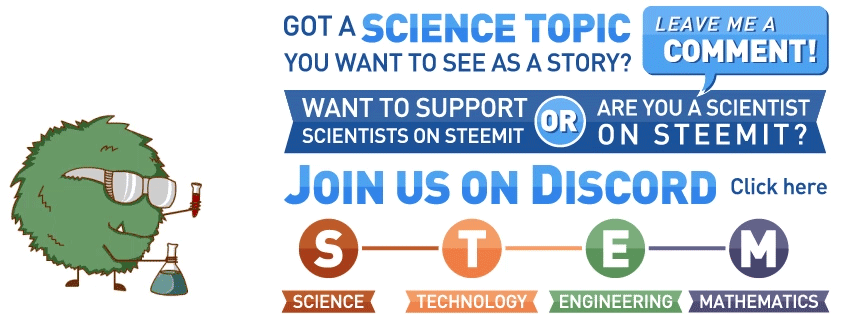
Great explanation. I'll have to remember the sentence "YOU CAN RUN OFF ANY DAY" because its the perfect teaching sentence for explaining codons and the effect of different mutations.
Downvoting a post can decrease pending rewards and make it less visible. Common reasons:
Submit
I had to search a bit for a working sentence because our biology teacher used a German sentence. Which I forgot too.
Downvoting a post can decrease pending rewards and make it less visible. Common reasons:
Submit
Just curious but are the drawings yours? I think they are excellent and really help highlite the material you are providing? Ever thought of trying to make videos for dtube? I'd be interested! Not enough science material on dtube at this time. Would be great to see you posting some video content in the future.
Downvoting a post can decrease pending rewards and make it less visible. Common reasons:
Submit
The magnificent scribbles are mine, yes :P and nah, a video is too much work.
Downvoting a post can decrease pending rewards and make it less visible. Common reasons:
Submit
As a biochemist, I’m so so impressed with how much you’ve broke down mutation. The examples are really extraordinary. These can even be recommended for college students who have a difficulties understanding this aspect of molecular biology. I loved your last post on “building blocks of life” anyway.
Downvoting a post can decrease pending rewards and make it less visible. Common reasons:
Submit
Thank you! Have you already joined the steemSTEM discord channel? You, as a biochemist, might be interested in being a part of the science community.
Downvoting a post can decrease pending rewards and make it less visible. Common reasons:
Submit
Oh yeah. I have joined the discord channel and it is quite interesting. Glad to be a part of it
Downvoting a post can decrease pending rewards and make it less visible. Common reasons:
Submit
I wonder, what's the actual most beneficial mutation humans has ever got, that basically gave us an edge to be where we are now?
Downvoting a post can decrease pending rewards and make it less visible. Common reasons:
Submit
There are a lot of small ones that made us who we are. Most are related to walking upright, having the kind of thumbs we have and developing a bigger brain. But those are only examples.
Downvoting a post can decrease pending rewards and make it less visible. Common reasons:
Submit
Are random mutations due to errors in copying or such more common than say ones caused by viruses?
I would think the viruses may cause more extreme mutations due to transfering entire sections of DNA.
Downvoting a post can decrease pending rewards and make it less visible. Common reasons:
Submit
It really depends. Our genome has a lot of viral genomes that are inactivated. I don't have any numbers on what's more common tho.
Downvoting a post can decrease pending rewards and make it less visible. Common reasons:
Submit
@suesa A very good overview and explanation on mutations with respect to genes with Open Reading Frames i.e. genes that encode proteins. Keep in mind that there are many genes that don’t encode proteins that are susceptible to mutations, and that there are many mutations that are what we call regulatory mutations and can have significant impact on the gene and gene’s product. For example mutations in promoters can cause either reduced or increased gene product or splicing mutations can make new splice variants. These kinds of regulatory mutations are quite common and are drivers of Evolution. I would edit this sentence “Same goes for insertions and deletions that happen in so-called non-coding regions. A change happens, but the genetic code is not affected by it.” as it sounds like mutations in non-coding regions (eg introns) can’t affect the code, but mutations in non coding can indeed affect the code, as a change in a splice acceptor or donor can make a new transcript and change the reading frame of a protein.
Similarly this sentence “As long as the mutation happens before and not inside or after that starting signal, the information inside the ORF is safe.” It sounds like that mutations before the start codon are safe. Yes safe from the ORF, but I would clarify that you can have mutations before the start codon that can affect the gene’s function/activity. As they way it is written, someone might believe they are safe to have mutations before the start codon.
YES science is really magnificent!
Cheers!
Ian
Downvoting a post can decrease pending rewards and make it less visible. Common reasons:
Submit
I agree, but then again, this text is for those who know next to nothing about biology, there needs to be a line where I stop explaining or I'll end up trying to explain miRNA and then I'll lose all of them ^^ But yea, you're right.
Downvoting a post can decrease pending rewards and make it less visible. Common reasons:
Submit
Yes I agree, one of the most challenging aspects about being a scientist is being able to explain your work to the general public. Please don't take my comments as a negative. You are doing a great job, but I just want to make sure that what is being posted on Steemit is true and/or at least not misleading.
Cheers!
ian
Downvoting a post can decrease pending rewards and make it less visible. Common reasons:
Submit
This is exactly true as distortion in the catalytic triad of the amino acid sequence leads to mutation of course or maybe a replacement of the amino acid. As in the case of sickle cell disease in which valine acid is found in the victim instead of glutamic acid
The artificial is unknown to me before and I learnt a great deal here.. Thanks
Downvoting a post can decrease pending rewards and make it less visible. Common reasons:
Submit
Great post,it's really educating
You had me in
"I can already feel some of you wondering “why does a change in the non-coding regions not mess up everything that comes after? It’s the same piece of DNA after all!” and technically, you’d be correct, if nature wasn’t super smart." Lol but you've always been good with science.
Keep steeming 🙌
Downvoting a post can decrease pending rewards and make it less visible. Common reasons:
Submit
Sometimes I find the whole entire concept of mutations wayyy too confusing and complex to understand. Especially since I'm not a medical or biological freak, so therefore Your post is a stitch in time! Thanks for the much needed enlightenment. I really do appreciate this! Once again, thanks for sharing.
Downvoting a post can decrease pending rewards and make it less visible. Common reasons:
Submit
great information. thank you for sharing.
I work in village school. I am very happy to join our story and support my students. stay with love :)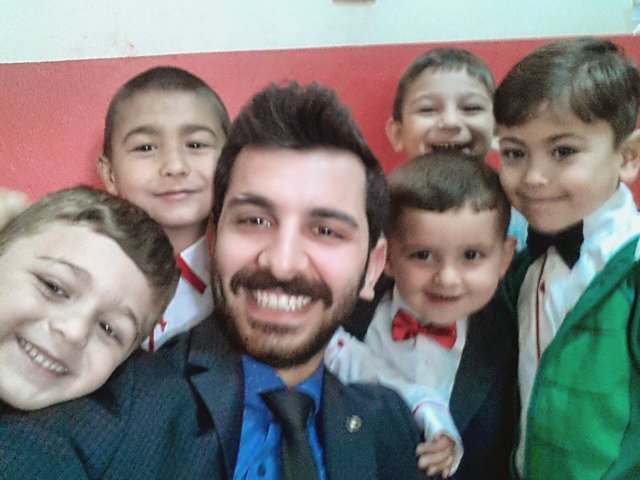
Downvoting a post can decrease pending rewards and make it less visible. Common reasons:
Submit
What should I eat without GMO?
Downvoting a post can decrease pending rewards and make it less visible. Common reasons:
Submit
Great quality post. Good job.
Downvoting a post can decrease pending rewards and make it less visible. Common reasons:
Submit
Science is not only magnificent but weird for us mortals xD Next, why is transgenic food not so healthy? Am I right in this?
Also, can I have strawberry-pineapple? No?
Downvoting a post can decrease pending rewards and make it less visible. Common reasons:
Submit
If a food is transgenic or not has usually nothing to do with the question if it's healthy or not. The problem is that transgenic food is often drowned in pesticides, because it's not harmed by that. The pesticides are the problem, not the genetic manipulation.
Downvoting a post can decrease pending rewards and make it less visible. Common reasons:
Submit
D: so strawberry-pineapple can be 100% healthy?
Downvoting a post can decrease pending rewards and make it less visible. Common reasons:
Submit
In theory
Downvoting a post can decrease pending rewards and make it less visible. Common reasons:
Submit
Wow this was interesting, and educational, I love seeing some science posts on steemit! :D
Downvoting a post can decrease pending rewards and make it less visible. Common reasons:
Submit
You should check out @steemstem then! The steemSTEM distilled posts have always great posts from a variety of authors.
Downvoting a post can decrease pending rewards and make it less visible. Common reasons:
Submit
Thanks, I'll check it out!
Downvoting a post can decrease pending rewards and make it less visible. Common reasons:
Submit
extraordinary @suesa
I am a resident of indonesia, best regards
@rizalpetro
Downvoting a post can decrease pending rewards and make it less visible. Common reasons:
Submit
Who knew that Biology could be made as easy as this.
Downvoting a post can decrease pending rewards and make it less visible. Common reasons:
Submit
@suesa Nice article. Good that you mentioned CRISPR too. :) I would like to see a CRISPR-Cas9 article. Lot of Patent related fights were going on recenlty for CRISPR thing.
Downvoting a post can decrease pending rewards and make it less visible. Common reasons:
Submit
Scientific knowledge is need every person
Because of the world modern world.without science knowledge impossible walk.
Downvoting a post can decrease pending rewards and make it less visible. Common reasons:
Submit
What should I eat without GMO?

Downvoting a post can decrease pending rewards and make it less visible. Common reasons:
Submit
GMOs are generally not dangerous.
Downvoting a post can decrease pending rewards and make it less visible. Common reasons:
Submit
Science has got alot !
Downvoting a post can decrease pending rewards and make it less visible. Common reasons:
Submit
That's why we always feel like something is missing.
Also, drawings <3
Downvoting a post can decrease pending rewards and make it less visible. Common reasons:
Submit
I don't know why I loved Science when I was in grade school and high school. So therefore, mutations can really cause our body to transform into something we might not know. It's so complicated but very interesting!
Downvoting a post can decrease pending rewards and make it less visible. Common reasons:
Submit
Downvoting a post can decrease pending rewards and make it less visible. Common reasons:
Submit
Did you find the content good enough for an upvote, or are you here only to upvote yourself? ;)
Downvoting a post can decrease pending rewards and make it less visible. Common reasons:
Submit
Over $2 upvote on your own comment? Which doesn't even add anything useful? And even wrong? HIV is not caused by mutations in the body. That is truly disgusting.
Edit: Editing your comment doesn't change anything.
Downvoting a post can decrease pending rewards and make it less visible. Common reasons:
Submit
Downvoting a post can decrease pending rewards and make it less visible. Common reasons:
Submit
Downvoting a post can decrease pending rewards and make it less visible. Common reasons:
Submit
Downvoting a post can decrease pending rewards and make it less visible. Common reasons:
Submit
copying half of a wikipedia article is not a good comment but rather spam.
Downvoting a post can decrease pending rewards and make it less visible. Common reasons:
Submit